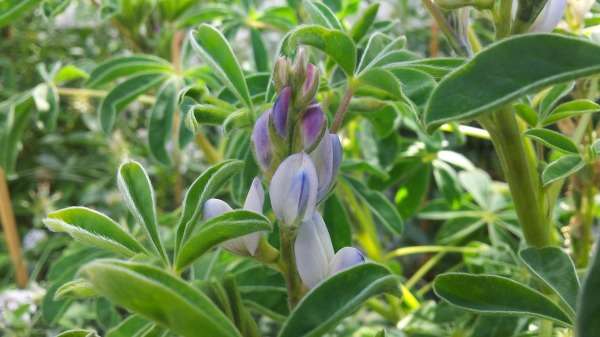Breakthrough in lupin genetics secures legume's future

Breaking the genetic bottleneck of the domesticated lupin plant could open up a world of possibilities for the legume in the global food industry.
Lupins, now well known for their high protein, high fibre and zero gluten content could be the next superfood if scientists could only improve their climate resilience, allowing WA farmers to consistently supply world markets.
Unlike its major competitor, the soybean, lupin varieties are completely GM-free.
But with 80 per cent of the world's narrow-leafed lupins grown in the northern grain belt, one poor season could cripple the industry and send interested consumers rushing back to the soybean for reliable supply.
Scientists now have a huge challenge in front of them to produce a lupin plant that is more adaptable to variable climatic and soil conditions and can be grown more widely across the continent.
Dr Matthew Nelson is one researcher who has been on a mission to improve the genetic diversity of the plant, which could allow it to be grown right across Australia's agricultural areas, thereby securing long term global markets.
In a four-year study, funded by the Grains Research and Development Corporation, and completed through UWA, Dr Nelson has discovered the gene that determines vernalisation response, or the requirement for the plant to have a cold period before flowering.
This now means breeders can more easily tinker with the length of the lupin life-cycle to produce longer season varieties suitable for larger agriculture areas across the country.
"Currently, growers only have access to short season lupin varieties, or very long season varieties, but there isn't really anything in between, which is deterring growers in the central and southern Wheatbelt from considering lupins in their rotation" he says.
"This research is the start of bridging that seasonal length gap."
The research has utilised genetic traits from wild lupins found predominantly in the Mediterranean region, which Dr Nelson says has a similar climate to southern Australia.
"The genetic diversity within the current domesticated pool is extremely narrow compared to what is available in the wild," he says.
Dr Nelson says the recent research findings now mean the future of the lupin, as a relatively cheap human consumption and stock feed protein and fibre source, is much more secure.
"Productivity levels in the cereals industry have plateaued in the last decade, and its critical that this doesn't also occur in the legumes industry," he says.
Provided by Science Network WA
This article first appeared on ScienceNetwork Western Australia a science news website based at Scitech.





















